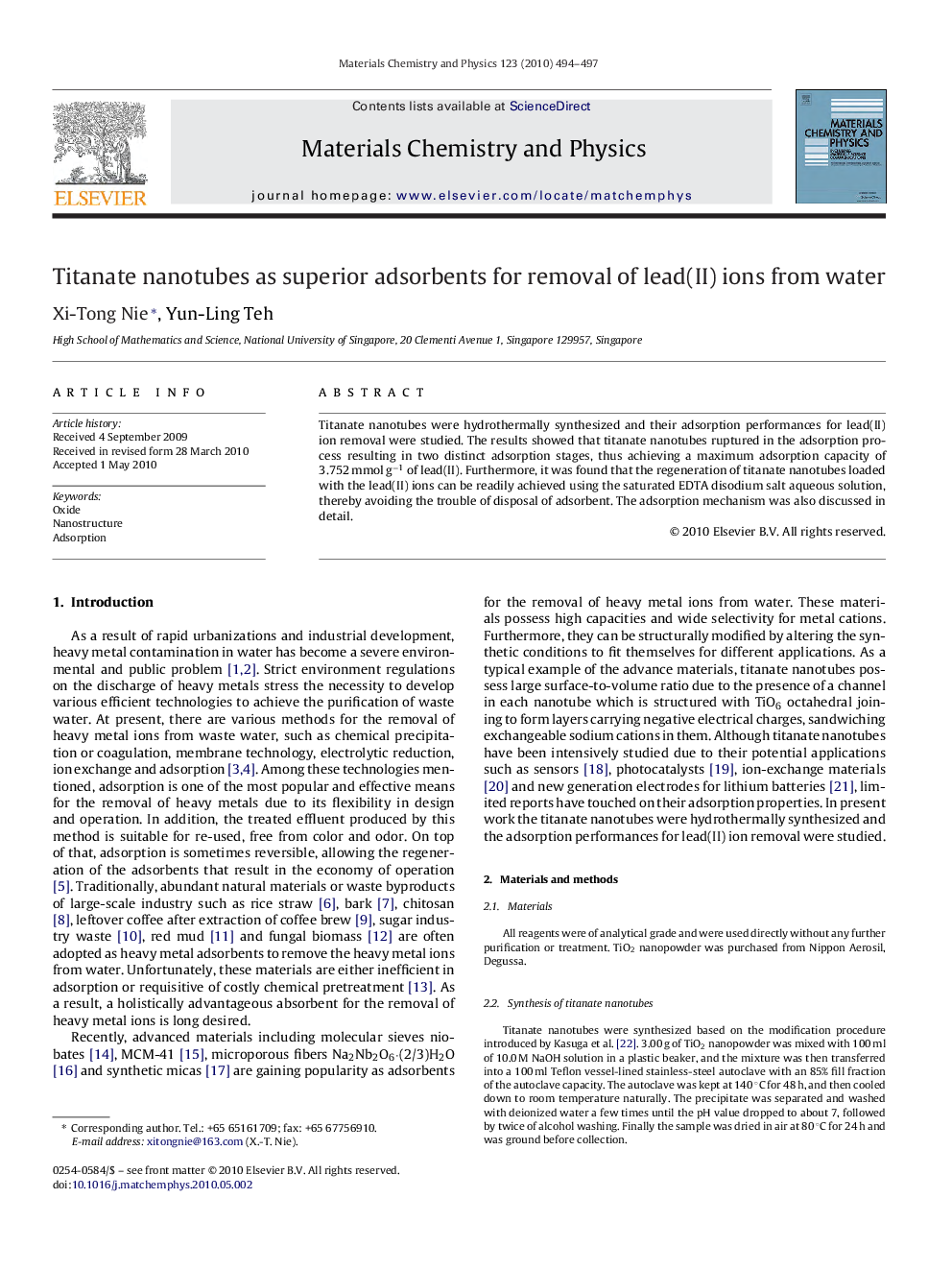| Article ID | Journal | Published Year | Pages | File Type |
|---|---|---|---|---|
| 1525193 | Materials Chemistry and Physics | 2010 | 4 Pages |
Abstract
Titanate nanotubes were hydrothermally synthesized and their adsorption performances for lead(II) ion removal were studied. The results showed that titanate nanotubes ruptured in the adsorption process resulting in two distinct adsorption stages, thus achieving a maximum adsorption capacity of 3.752 mmol g−1 of lead(II). Furthermore, it was found that the regeneration of titanate nanotubes loaded with the lead(II) ions can be readily achieved using the saturated EDTA disodium salt aqueous solution, thereby avoiding the trouble of disposal of adsorbent. The adsorption mechanism was also discussed in detail.
Keywords
Related Topics
Physical Sciences and Engineering
Materials Science
Electronic, Optical and Magnetic Materials
Authors
Xi-Tong Nie, Yun-Ling Teh,
